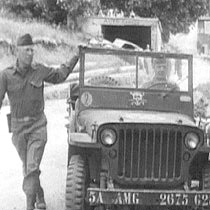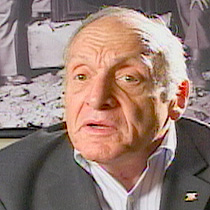2007年VOA标准英语-Congress Honors Those Who Saved Europe's Great(在线收听)
By Jeff Swicord
Washington
18 June 2007
They were the men assigned to save Europe's great art treasures during World War Two. In early 1943, the U.S. and its allies learned that the Nazis were confiscating great works of art across Europe. In response, President Franklin D. Roosevelt established the American Commission for the Protection and Salvage of Artistic and Historic Monuments in War Areas. The men assigned to the job became known as the "Monuments Men." And 64 years later their efforts are finally being honored. VOA'S Jeff Swicord reports.
 |
Writer Robert Edsal co-authored their story in the book "Rescuing da Vinci." "You consider that in the period six or seven years they were able to locate, in thousands of hiding places -- it was the greatest treasure hunt in history -- and ultimately return to the countries that were stolen more than five million works of art, books, stained glass, church bells from cathedrals throughout Europe. It is really an extraordinary accomplishment."
 |
| Harry Ettlenger |
In 1944 with Allied armies liberating territory taken by the Nazis, U.S. soldiers with the Monument, Fine Arts and Archives Unit took on the daunting task of locating stolen treasures.
Harry Ettlenger was a member of the unit. "My first assignment was to effectively read letters and documents that were written in German and provide that information to the captain who took me under his wing."
Luckily, the Nazis kept detailed records of the stolen art. The "Monuments Men" also interviewed art representatives from occupied countries and interrogated captured Nazi officials.
Bernard Taper remembers searching for the Czartoryski collection, looted from Poland's National Museum in Krakow. "That was a famous collection. Wonderful works of art. A da Vinci -- "Lady with an Ermine" -- a Rembrandt portrait. Other wonderful things."
Taper focused on finding one painting from the collection: Raphael's "Portrait of a Young Man." His first task was to meet with the art representative from Poland.
"We had a session, more than one session, where we talked about the missing painting and how it might have left Poland, who might have been involved with it and what Nazi people might have known more than others," recalls Taper.
The collection eventually came under the control of the Nazi governor of Poland, Hans Frank. And the Allies eventually found most of the collection with Frank at his home in Neuhaus, Germany. But the Raphael remains missing.
The value of the art catalogued and saved by the Monuments Men is estimated at more than a trillion dollars. Sixty years later, their efforts have been honored in a resolution passed by both houses of Congress.